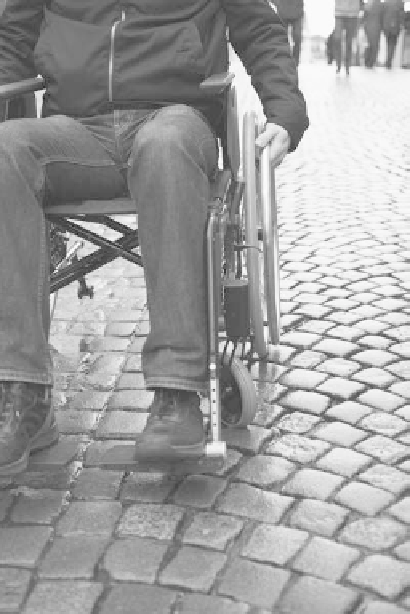Travel Reference
In-Depth Information
group is considered as being made up of segments rather than being homogeneous. Historically,
individuals with disabilities have been categorized by either their medical conditions or their level of
self-suf
ciency. Severe, moderate, or minor are the common disability classi
cations. Of the three
subgroups, the more severe the mobility disability, the more special attention is needed. The
severely disabled are seeking a quiet and peaceful destination that allows them to be independent
and that provides easy access. Travel suppliers should know that the moderately and severely
disabled use only two modes of transportation: car or van and air. Mobility-disabled consumers are
very loyal to destination hotels, motels, and resorts that are sensitive to their needs while not being
patronizing.
8
For additional information and statistics on people with disabilities, contact the American Association
of People with Disabilities (AAPD)
www.aapd.com
and the Cornell University Rehabilitation Research
and Training Center on Disability Demographics and Statistics,
www.disabilitystatistics.org
.
Americans with Disabilities Act
Substantial improvements have been made by the tourist industry to serve this segment of the
market over the years. Activity accelerated with the enactment of the Americans with Disabilities
Act (ADA) on July 26, 1990. ADA contains
five titles, or sections: Employment, Public Services,
Public Accommodations and Services Operated by Private Entities, Telecommunications, and
Miscellaneous Provisions. Included in these titles are mandates for accessible public transit and
complementary paratransit; accessible intercity (Amtrak) and commuter rail; accessible stations;
accessible public accommodation (private entities), including inns, hotels, motels, restaurants, bars,
theaters, concert halls, auditoriums, convention centers, all kinds of stores, service establishments,
of
ces, terminals and depots, museums, libraries, galleries, schools, and so on; and telecommu-
nications relay services for hearing- and speech-impaired persons.
Although the act is not speci
cally a travel law, travel agencies, lodging establishments,
motorcoach operators, museums, and restaurants fall into the broad category of public accom-
modations that are required to make their
facilities accessible to disabled persons. As
the U.S. Justice Department and Transporta-
tion Department issue
final regulations and
firms comply, easier travel for the disabled will
result.
The Society for Accessible
Travel and Hospitality
The Society of Accessible Travel and Hospitality
(SATH), founded in 1976 as the Society for
Advancement of Travel for the Handicapped,
is an educational, nonpro
t membership orga-
nization whose mission is to raise awareness of
the needs of all travelers with disabilities,
remove physical and attitudinal barriers to
free access, and expand travel opportunities
in the United States and abroad. Members
include travel professionals, consumers with
disabilities, and other individuals and corpora-
tions who support this mission.
The American with
Disabilities Act (ADA) now
makes it easier for
handicapped persons to
enjoy travel.
Photocourtesy
ofImageSource/GettyImages.









Search WWH ::

Custom Search